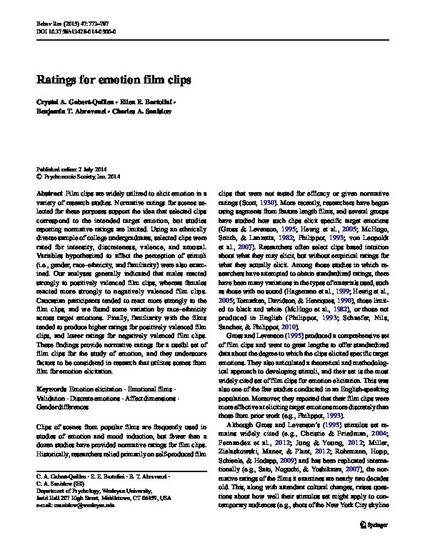
Article
Ratings for emotion film clips
Behavioral Research Methods: Psychonomic Society
(2015)
Abstract
Film clips are widely utilized to elicit emotion in a variety of research studies. Normative ratings for scenes selected for these purposes support the idea that selected clips correspond to the intended target emotion, but studies reporting normative ratings are limited. Using an ethnically diverse sample of college undergraduates, selected clips were rated for intensity, discreteness, valence, and arousal. Variables hypothesized to affect the perception of stimuli (i.e., gender, race–ethnicity, and familiarity) were also examined. Our analyses generally indicated that males reacted strongly to positively valenced film clips, whereas females reacted more strongly to negatively valenced film clips. Caucasian participants tended to react more strongly to the film clips, and we found some variation by race–ethnicity across target emotions. Finally, familiarity with the films tended to produce higher ratings for positively valenced film clips, and lower ratings for negatively valenced film clips. These findings provide normative ratings for a useful set of film clips for the study of emotion, and they underscore factors to be considered in research that utilizes scenes from film for emotion elicitation.
Keywords
- Emotion elicitation,
- Emotional films,
- Validation,
- Discrete emotions,
- Affect dimensions,
- Gender differences
Disciplines
Publication Date
Fall September 1, 2015
Citation Information
Gabert-Quillen, C. A., Bartolini, E. E., Abravanel, B. T., & Sanislow, C. A. (2015). Ratings for emotion film clips. Behavioral Research Methods.
